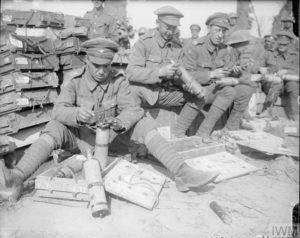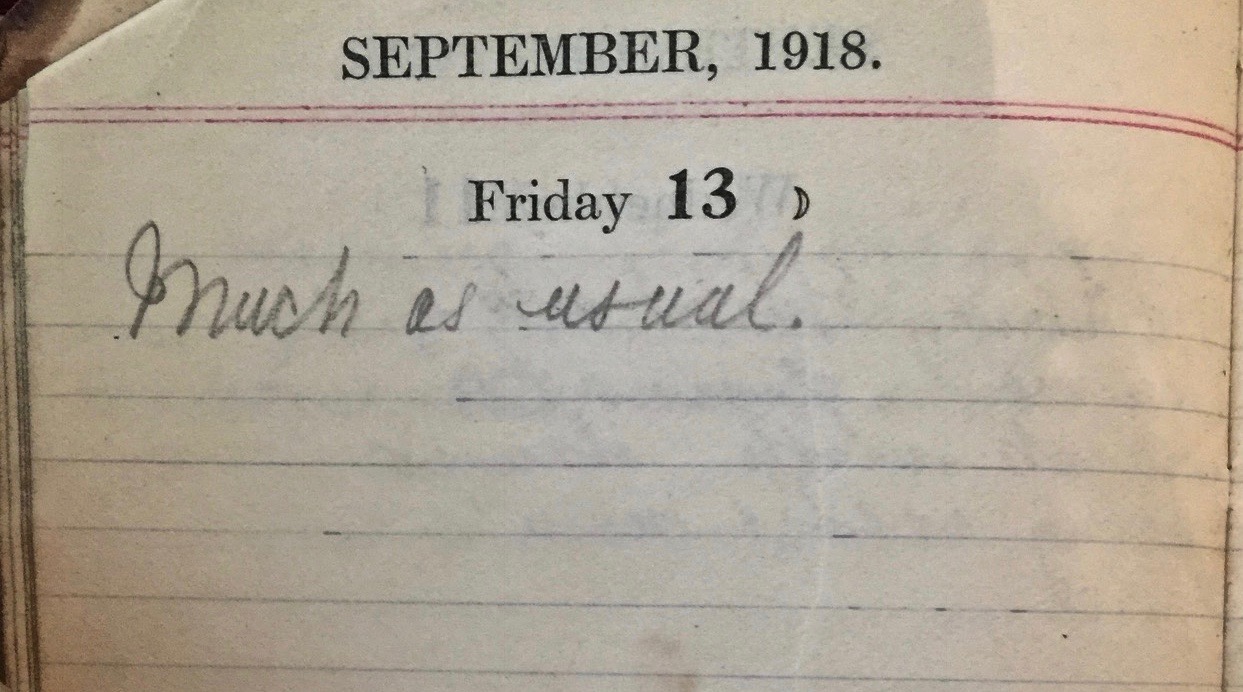Friday September 13th, 1918
Much as usual
Light Trench Mortar Battery
Today, the Battalion Diary notes that it loses one soldier to the 199th Brigade’s Light Trench Mortar Battery.
Trench mortars had been out of fashion for 50 years at the outbreak of WWI. So, when they proved perfect for its style of stationary warfare, it took some time for the British Army to rediscover and deploy them.
However, the Army ultimately standardized on three types of trench mortars. These were the 3-inch Stokes (classed as light), the 6-inch Newton Mortar (medium) and the ‘flying pig’, the muzzle-loading 9.45 inch (heavy).²
Trench Mortar Batteries
By spring 1916 the the British Expeditionary Force on the Western Front included light Trench Mortar Batteries (TMBs) formed within each Infantry Brigade, and three medium and one heavy TMB at Divisional level manned by the Artillery. In February 1918, the heavy TMB moved under the control of the Corps.²
Whilst organizationally, Light TMB were under the direct command of the Brigade Headquarters, they were generally deployed close to the front line so that the enemy was within range.
Organization of the Trench Mortar Batteries

The formation of the batteries changed over the course of the war, but by August 1916 they had settled as follows:
Light Trench Mortar Battery (2 Sections, each of four 3-inch Stokes mortars)
Captain, 3 Lieutenants or Second Lieutenants, 2 Sergeants, 8 Corporals or Lance-Corporals, 32 Privates, 4 Batmen.
Medium Trench Mortar Battery (four 2-inch mortars)
2 Officers, 1 Sergeant, 4 Corporals or Bombardiers, 16 Privates, 2 Batmen.
Heavy Trench Mortar Battery (four 9.45-inch mortars)
Captain, 2 Lieutenants or Second Lieutenants, 3 Sergeants, 1 Fitter, 4 Corporals, 4 Bombardiers, 47 Gunners (including 3 telephonists), 2 Orderlies, 1 Clerk, 1 Cook, 3 Batmen.¹ ³
Presumably the man leaving the 9th Battalion for the 199th Brigade’s LTMB is to be one of its 32 privates. His chores will likely include those shown in this photograph which was taken during the Battle of Passchendaele (July-November 1917).*
9th Battalion War Diary – 13th September 1918 – Haudricourt
Training as per programme. 1 OR is struck off the effective strength of the Battalion on admission to hospital in UK 4-9-18. 1 OR having rejoined is taken on the strength 12-9-18. 18 OR are struck off the effective strength on being absorbed into the authorized establishment of the 199th LTMB.
References & Further Reading
1 British Trench Mortar Batteries on the Long Long Trail
² 9.45 inch Heavy Mortars on Wikipedia
³ Thread on Great War Forum
* Q 6025, copyright Imperial War Museums


